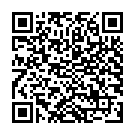|
|
|
| Module code: MST2.PH1 |
|
|
5V+2U (7 hours per week) |
|
7 |
| Semester: 1 |
| Mandatory course: yes |
Language of instruction:
German |
Assessment:
Written exam 120 min.
[updated 05.10.2020]
|
MST2.PH1 (P231-0062) Mechatronics and Sensor Technology, Bachelor, ASPO 01.10.2019
, semester 1, mandatory course
MST2.PH1 (P231-0062) Mechatronics and Sensor Technology, Bachelor, ASPO 01.10.2020
, semester 1, mandatory course
|
105 class hours (= 78.75 clock hours) over a 15-week period.
The total student study time is 210 hours (equivalent to 7 ECTS credits).
There are therefore 131.25 hours available for class preparation and follow-up work and exam preparation.
|
Recommended prerequisites (modules):
None.
|
Recommended as prerequisite for:
MST2.ATO Atomic and Solid-State Physics
MST2.PH3 Physics 3
[updated 02.03.2021]
|
Module coordinator:
Prof. Dr.-Ing. Barbara Hippauf |
Lecturer:
Prof. Dr.-Ing. Barbara Hippauf (lecture)
Dipl.-Ing. Dirk Ammon (exercise)
[updated 21.01.2020]
|
Learning outcomes:
After successfully completing this module, students will understand and be able to apply physical phenomena and quantities in mechanics and optics.
They will be able to work with physical quantities and units. They will be able to analyze simple physical problems and solve them with suitable methods, as well as check their solutions for plausibility and applicability.
[updated 05.10.2020]
|
Module content:
Kinematics
Definition of the kinematic variables for linear motion,
linear uniform motion, linear uniformly accelerated motion, free fall,
non-rectilinear motion, especially circular motion, oblique throwing, oscillations
Dynamics of a mass point
Force and momentum, conservation of momentum, especially elastic and inelastic collisions, Newtonian laws,
Friction,
Dynamics in curvilinear motion, especially circular motion, torque and angular momentum, angular momentum,
Work, power, potential and kinetic energy, energy conservation with conservative force,
Gravitational force
Dynamics of rigid bodies
Center of gravity and moment of inertia in rigid bodies, rotation equations,
Physical pendulum, torsion pendulum,
Rotational energy, gyroscope
Waves
Propagation of waves of different physical quantities, general wave equation,
Superposition of waves, standing wave, interference, amplitude modulation, frequency modulation,
Optics
Propagation of light in a medium, laws of reflection and refraction,
Mirrors, lenses in geometric optics, image equation, combination of lenses,
Structure of the eye, magnifying glass, microscope, telescope, analog and digital camera,
Light as waves, phase and group velocity, polarization, Huygens principle, diffraction through slits, interference at double slit and grating, Newton´s rings, resolving power of optical instruments
Atomic Physics
Bohr´s postulate, energy levels in the Hydrogen atom, generating X-rays, using X-rays, especially Bragg reflection in X-ray diffraction and scanning electron microscope,
Photoelectric effect, photons, quantum of action
Thermally generated emission of electrons, heat transfer by radiation.
[updated 05.10.2020]
|
Teaching methods/Media:
Viedo projector, smartboard, whiteboard, blackboard, interactive script, learning kits for experiments that can be carried out individually Experiments
[updated 05.10.2020]
|
Recommended or required reading:
M. Alonso, E. J. Finn: Physik; dritte Auflage, Oldenbourg Verlag, 2000.
Paul A. Tipler: Physik für Wissenschaftler und Ingenieure, sechste Auflage, Springer Spektrum Verlag, 2009.
Hering, Martin, Stohrer: Physik für Ingenieure; Springer Verlag, 2012.
Wolfgang Demtröder: Experimentalphysik 1, Mechanik und Wärme; sechste Auflage, Springer Verlag, 2013.
Eugene, Hecht: Optik; Oldenbourg Wissenschaftsverlag GmbH, 2014.
[updated 05.10.2020]
|


